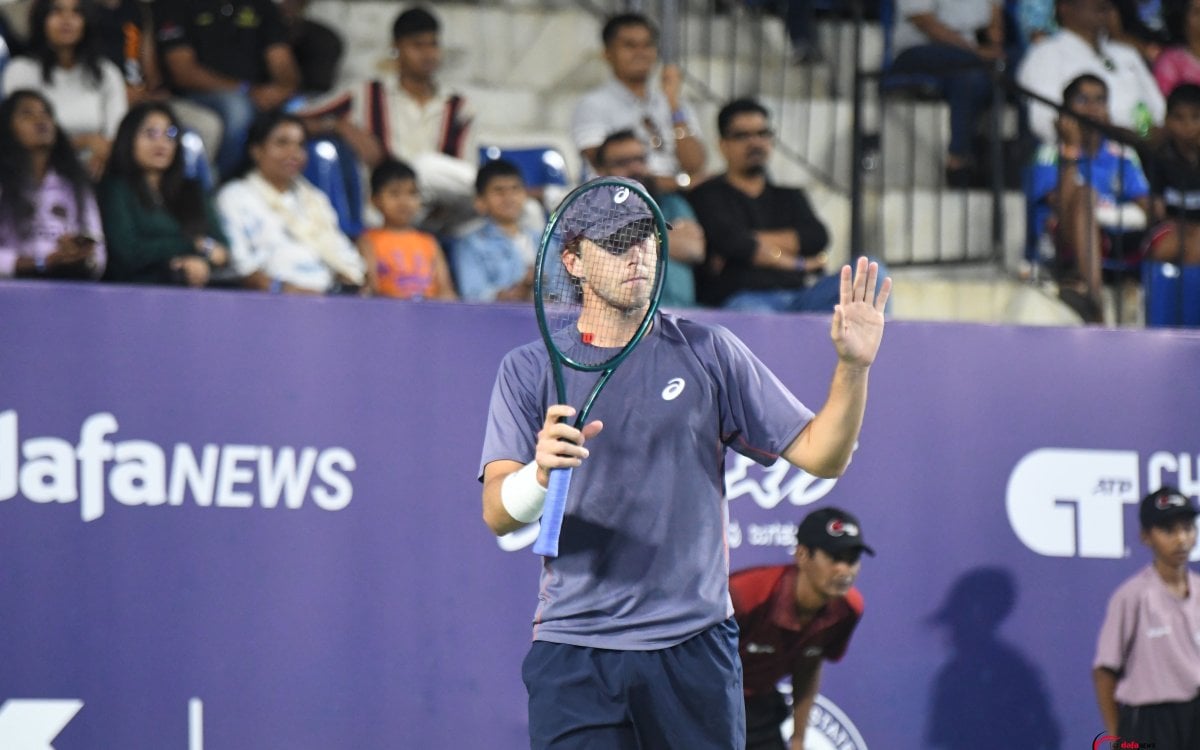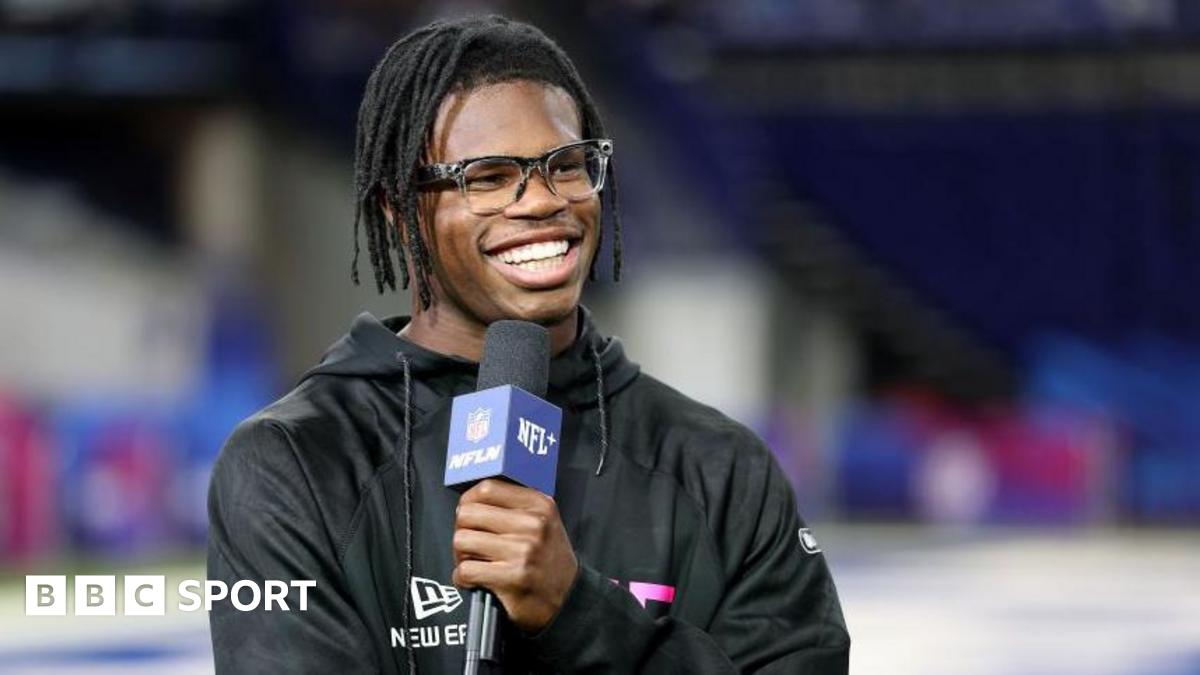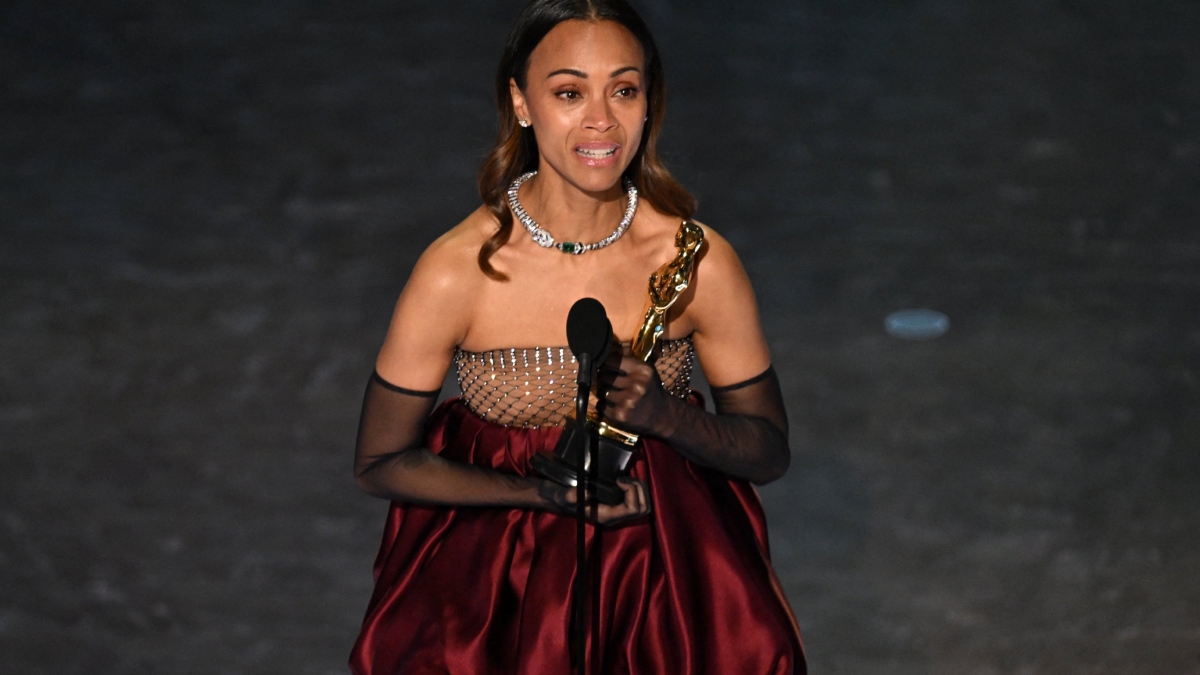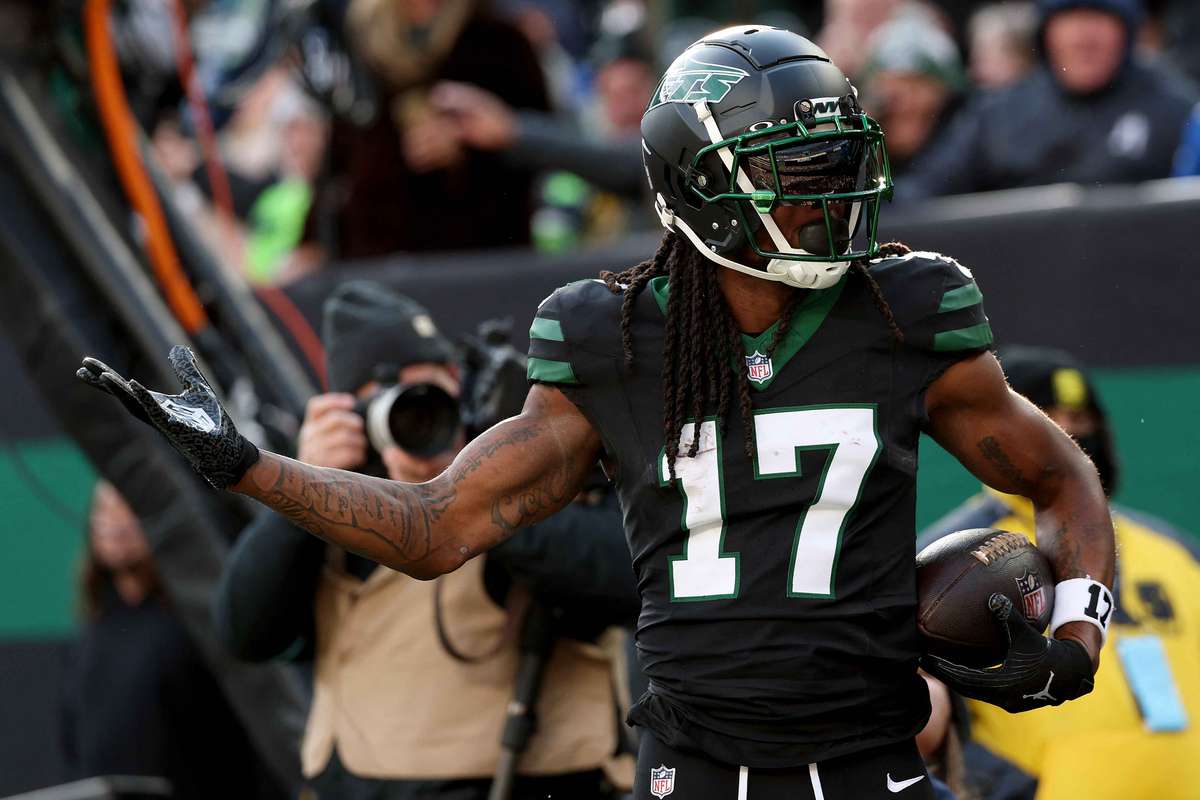How tennis players play their best friends with Grand Slams on the line

NEW YORK — When he is on a tennis court, Taylor Fritz does not want to see his friends. On Friday, on the biggest stage in the sport, he will be joined by one of his best ones — compatriot Frances Tiafoe — on the other side of the net in the semifinals of the U.S. Open.
“I hate it,” Fritz said in an interview ahead of Wimbledon.
“It’s tough to get into it when you’re playing a friend. I’ve had a good record in these matches, but it’s definitely uncomfortable.”
Back then, Fritz and Tiafoe had no idea what was waiting for them in New York. They have been buddies and rivals since their early teens. Now, they will play each other to reach the final of their home Grand Slam.
Suddenly, the prospect isn’t quite so unappealing for Fritz. “It’s going to be a lot of fun,” he said on Tuesday, after beating Alexander Zverev in four sets.
Tiafoe agrees.
“I’m happy for him. I know he’s happy for me. Let the best man win come Friday,” he said after overcoming Grigor Dimitrov on Tuesday night.
“It’s going to be epic.”
Tennis throws up many strange curiosities and paradoxes. The possibility of having to take ranking points, prestige, and prize money from the people closest to you is one of the strangest. It is also one of the most relatable, despite the rarity of this frazzling dynamic. Few professionals ever have to battle against those they hold dearest, but everyone can imagine how discomfiting it would be.
This year’s U.S. Open has put that discomfort on full display. Friends are tasked with dashing each other’s dreams in both men’s semifinals, as No. 25 seed Jack Draper faces world No. 1 Jannik Sinner on the other side of the draw. The pair first met on the junior circuit, and they played doubles together in Montreal last month. They message regularly — in the good times and the bad.
“Playing such an intense sport, both physically and emotionally — we haven’t got many friends,” Draper said on Wednesday.
“To have the support of someone who’s going through it themselves is really big.”
Dimitrov beat his close friend Andrey Rublev in five sets on Sunday, putting aside their bromance. The following day, Australian Davis Cup team-mates Alex de Minaur and Jordan Thompson went head to head for a place in the quarterfinal. The pair go back more than 10 years, and when a young De Minaur was coming through, he used to get lifts to the gym in Sydney from Thompson, five years his senior.
“Off the court, all, good. And then on the court, all business,” Thompson said.
Thompson (left) and de Minaur have been friends since the early days of their careers. (Charly Triballeau / AFP via Getty Images)
De Minaur still looked almost embarrassed when he won the first set 6-0, en route to a four-set win, and lopsided, strange matches between players who are close, by friendship or by blood, are not uncommon. “We both know how to make each other play badly, we know each other’s weaknesses,” De Minaur said.
“It doesn’t always equate to the best quality match.”
This phenomenon might be nicknamed ‘the Williams rule’: Serena and Venus, two of the greatest women’s players of all time, knew each other so intimately that their matches tended to disappoint, lacking the needle and tension that the best contests have. Close relationships can also intersect with lopsided matchups, with the tennis fate of the two players involved casting new light on the relationship between them.
Russian pair Daniil Medvedev, 28 and Rublev, 26 are so close that the latter is the godfather to Medvedev’s daughter. Medvedev leads the head to head 8-2, creating a ‘big brother-little brother’ dynamic, in which the older sibling has almost always won out. They are ambivalent about their relationship during the match, but before and after, the strangeness of the situation is impossible to ignore.
“I think there can be a bit of awkwardness,” Medvedev said.
“If you win, you definitely aren’t going to be the first one to talk.”
“Then maybe before the match you also don’t know exactly how to act but once you’re in the match, everyone wants to win. I think we really do — if it’s me and Andrey, I’m sure we don’t care that we’re best friends on the court. We have had some brutal matches.”

GO DEEPER
Daniil Medvedev is the fly-swatting enigma of men’s tennis – and he’s taking a moment
That brutality only ramps up in matches with more on the line — and it exacerbates the strangeness of losing something you have always dreamed of, to somebody that you would want to win more than anybody else, in any other scenario.
Seven years ago in New York, the 2017 U.S. Open final pitted childhood friends Madison Keys and Sloane Stephens against each other. Stephens won a one-sided match 6-3, 6-0, and everyone watching felt varying degrees of discomfort.
“Sloane is truly one of my favourite people,” Keys said afterwards. “If I’m going to lose to anyone today, I’m glad it’s to her.”
Seven years on, Keys is more philosophical. “You never really want to play your friend,” she said at the French Open, but “when you walk on the court, you want to win the match.”
The history of tennis frenemies since the sport turned professional in the late 1960s, begins with Chris Evert and Martina Navratilova. They faced each other 80 times while dominating the WTA Tour in the 1970s and 1980s, remaining extremely close friends off the court. Such was their closeness, that in the early 1980s Nancy Lieberman, the groundbreaking women’s basketball star, told Navratilova that to be successful, she had to feel hostility.

GO DEEPER
‘I felt like no one was going to beat me’: How Chris Evert made the French Open her home
The advice worked, as Navratilova went on a run of 13 wins a row against Evert. Having gotten so close emotionally, Evert realised that the friendship was a problem when Navratilova started winning more often.
“I had to tell her, I can’t play doubles with you. It’s affecting my singles,” Evert said at Wimbledon.
“We were hanging around each other too much — (Aryna) Sabalenka and Iga (Swiatek) wouldn’t be hanging out like that.”
Navratilova has a different perspective, finding it more difficult to face players with whom she had a cold relationship. “I enjoyed playing my friends,” she said. Thirteen wins in a row might do that, and the duo are an exception in recent rivalries at the very top of tennis.

Martina Navratilova and Chris Evert won titles with each other and against each other. (Jacqueline Duvoisin / Sports Illustrated via Getty Images)
Jimmy Connors and John McEnroe largely loathed each other; McEnroe and Bjorn Borg’s mutual respect came from the ‘opposites-attract’ dynamic between their personalities. This respect also defined the dynamic between the Big Three of Roger Federer, Rafael Nadal and Novak Djokovic.
“We have never been friends,” Djokovic said of the three to Italian outlet Corriere della Sera in May 2023.
In an interview with CBS show 60 Minutes, seven months later, Djokovic elaborated.
“We are not friends because we’re rivals. It’s difficult as competitors to be very close, to give insights to your life or to how you feel.
“It could be used against you.”
Nadal and Federer became closer as time went by, but Djokovic never quite fit in. Djokovic and Federer in fact had a pretty frosty relationship when the former first emerged as a genuine threat to the Swiss, but that eventually thawed.
Keeping some distance makes sense, in an individual sport where it’s all about maintaining an aura and finding whatever edge you can. The rivalry between Andre Agassi and Pete Sampras defined men’s tennis before Federer came along, and it had very little warmth. Agassi accused Sampras of being tight with money in his 2009 autobiography, Open, and after seeing Sampras impersonate him in a charity match a year later, Agassi teased him about the tightness in an excruciating exchange.
Sampras responded by hitting a serve towards Agassi’s head that forced him to duck for cover.
On the women’s side, the comparative lack of tension between the Williams sisters led to a preference for matches between players with cooler relations, but even those could get uncomfortable. Serena and Maria Sharapova’s rivalry had the antagonism — to the point that it was sometimes uncomfortable — but lacked in meaningful competition.
Williams ended up with a 20-2 head-to-head record at a time when the women’s tour had numerous, fractious rivalries. Williams, S. and V., vs. Martina Hingis, Ana Ivanovic vs. Jelena Jankovic. Justine Henin vs. Kim Clijsters. Sharapova vs. …pretty much everyone.
“I have not a lot of friends away from the courts,” she said in a 2013 Wimbledon press conference. At the 2014 Cincinnati Open, she said “check her blood pressure” to the umpire after Ivanovic upped her level following a medical timeout.
In the contemporary women’s game, two of its most popular players are near inseparable. World No. 2 Aryna Sabalenka has described world No. 29 (and former world No. 2) Paula Badosa as her “soulmate”. They take holidays and do pre-seasons together, and have become almost inseparable since first hanging out three years ago at an exhibition event in Los Angeles. They are both very tight with former U.S. Open finalist Ons Jabeur.
“She’s my favourite,” Sabalenka said of Badosa, ahead of the pair meeting at the French Open in June. Badosa was equally adoring. “I can say she’s my closest friend,” she said.
Sabalenka ultimately ran away with a 7-5, 6-1 victory at Roland Garros. There were seven breaks of serve, recalling De Minaur’s comments about the way in which knowing a person so well can make it easier to poke holes in their strategy. But the match was strictly business, and no one watching the way they celebrated points would have had any sense of the pair’s backstory.
They could not have divined how much of a support Badosa was when Sabalenka’s ex-boyfriend Konstantin Koltsov died earlier this year, or imagined the importance of the guidance that Sabalenka gave to Badosa as she battled debilitating injuries.
Only the warm hug at the net at the end of the match betrayed the pair’s closeness.
“We have to separate things,” Sabalenka said in her on-court interview. “She seems to be pissed a bit,” the Belarusian joked after they passed each other in the corridor on the way to press conference duties.
“We are opponents on court, but we are always going to be friends,” Badosa said. The resurgent Spaniard has this year made inroads to the latter stages of Grand Slams, at Wimbledon and the U.S. Open, and it will be interesting should they play with more on the line.
It will be interesting to see what happens if Badosa continues her recent resurgence after injury and starts competing at the sharp end of slams. She’s never made a semifinal, whereas Sabalenka has made seven of the last eight she’s entered. Should Badosa start threatening her good pal on the biggest stages, their friendship, like Navratilova and Evert’s, may have to cool.

Aryna Sabalenka and Paula Badosa are very close friends. (Glyn Kirk / AFP via Getty Images)
Like the men’s ‘Big Three,’ some women’s players are happier to keep their distance. World No. 1 Swiatek is a natural introvert.
“I don’t have many friends,” she said last year — but came after playing her closest friend on the tour. Kaja Juvan, world No. 227, normally orbits in a different part of the tennis universe to her good friend. But when she qualified for the U.S. Open last August, the pair were drawn opposite each other in the first round.
In a horribly one-sided 6-0, 6-1 thrashing, it took Juvan 39 minutes to win a game.
Maybe Coco Gauff has found the perfect solution, by largely befriending ATP players like Christopher Eubanks, who says he sees himself as her “big brother”. All the companionship; no possibility of playing each other on tour, except in a mixed doubles.
“I think all the girls go hard on the court, fine off the court,” Gauff said.
“These are your friends or coworkers for the next, 10 or 15 years. You better get along or it’s going to be miserable.”
For Fritz and Tiafoe, part of their closeness comes from how different they are. Fritz more reserved and circumspect, Tiafoe extroverted and cracking jokes.
“These are all fun guys, great guys, and then you also have Taylor,” Tiafoe said with a glint in his eye, when asked about their crop of American players a couple of years ago.
He repeated that message prior to their semifinal, before reflecting on how the quality and the stakes of their tennis matches had changed his perception of his friend.
“When I first met him, Taylor was an odd cat,” Tiafoe said.
“Once we all turned pro, we all just pushed each other to want to be great.
“Sometimes unspoken; sometimes you speak about it. Nobody wants to leave each other behind.”

Taylor Fritz and Frances Tiafoe at Indian Wells in 2016. (Glyn Kirk / AFP via Getty Images)
Fritz, who leads their head-to-head 6-1, still feels that it is “always very tight when we play each other”, largely because of the friendship stakes playing out alongside those of the match. That is the fascination of this unique tennis situation: you are competing against one of your best friends, for the thing you’ve both spent your whole life striving for, in front of thousands of people?
How will you react? Do you love it, or do you loathe it?
A mutual friend, world No. 14 Tommy Paul, who exited to Sinner in the fourth round, summarised the strange interplay of closeness and magnitude. “I hate playing them first or second round,” he said in an interview at Queen’s Club in London earlier this summer.
“Playing semis or finals of a big tournament? That’s what we dreamed about when we were young.”
(Top photos: Koji Watanabe, Robert Prange / Getty Images; design: Demetrius Robinson)
Related
American Legend Andre Agassi Heartily Thanks Daughter Jaz For Bringing…
Andre Agassi has always been a trendsetter. Whether it’s hitting beautiful backhands or rocking the most bizarre outfits, he’s always making a statement. In
Bengaluru Open: Tennis Legend’s Son Brandon Holt Clinches Title Over…
Karnataka State Lawn Tennis As
Pegula to play Kessler in all-American Austin final
Top seed Jessica Pegula advanced to her second final of 2025 with a 6-1, 4-6, 6-3 win over Ajla Tomljanovic at the WTA 250 ATX Open on Satu
BNP Paribas Open in Indian Wells: 10 American players who…
BNP Paribas Open 2025 preview by reporters Shad Powers and Andrew JohnDesert Sun sports columnist Shad Powers and tennis reporter Andrew John discuss this year'












